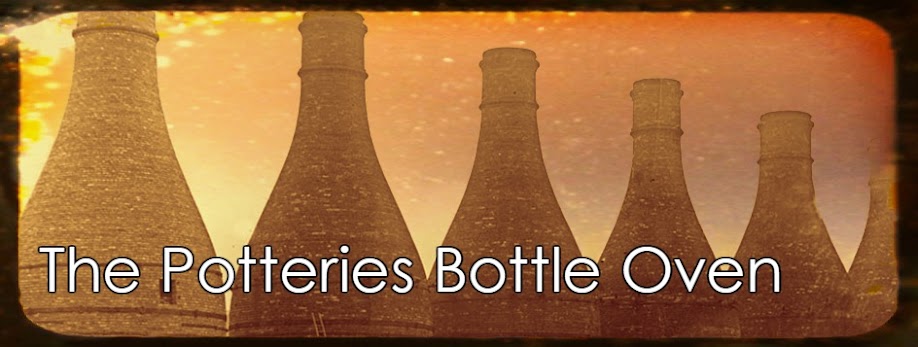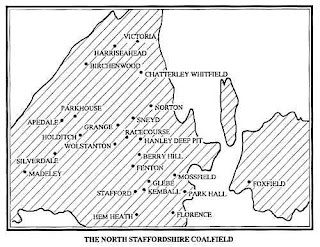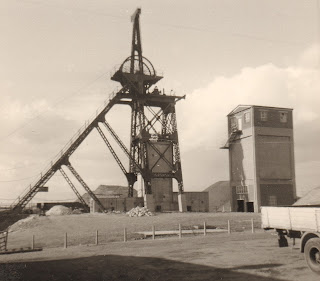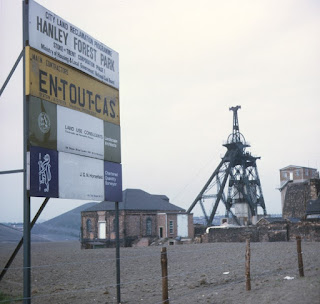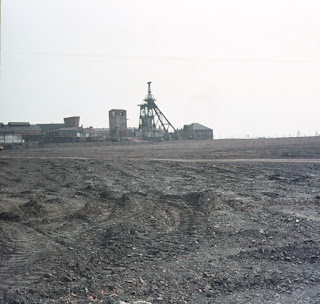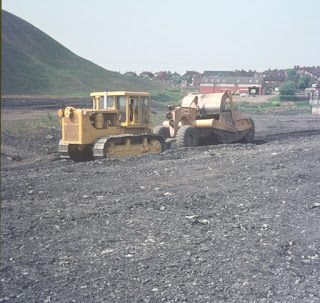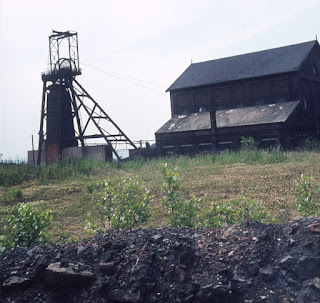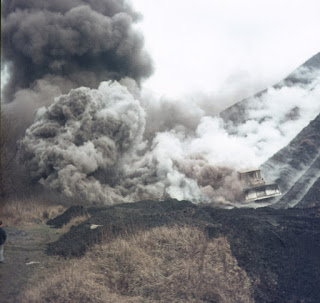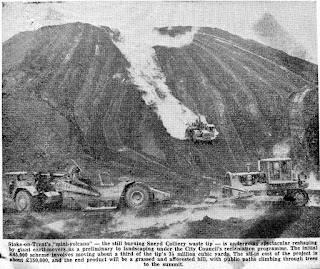HOW MUCH COAL DOES A BOTTLE OVEN CONSUME DURING FIRING?
Now that is an interesting and very difficult question to answer.No two ovens are alike. Large ovens will obviously consume more coal than small ovens. And an updraught oven is less efficient and will consume more fuel than a downdraught oven of the same size and 'oven fill'.
The oven took 28.5 hours to fire to 1060ºC. The oven consumed 10 tons and 17 cwt of coal - 'washed bituminous beans.'
The total cost of the coal to fire the oven in 1941 was 23 shillings - £1.15 in decimal currency.
The efficiency of the oven, calculated from the data summarised in the heat balance, showed that less than 1% of the heat input was employed usefully in heating the ware and only 5% was used in the whole setting (including the saggars.)
Bigger ovens with more product would consume more coal whereas a small enamel muffle kiln would consume much less.
So it is difficult to give one simple answer but as a rule of thumb, and using loads of averaging to show how inefficient the bottle oven really was, lets say that 10 tons of coal is required to fire 1 ton of clay ware. 10 to 1. That's why clay, the basic raw material, was brought from Cornwall to the Potteries. Not the other way around.
FUEL EFFICIENCY
1937 - British Pottery Manufacturers Federation Report
The firing of an oven was extremely inefficient. According to the British Pottery Manufacturers Federation, in their publication Pottery Ovens Fuels and Firing published in 1937:
- 50% of the fuel consumed in an updraught oven will produce heat which is unavailable for firing purposes and is lost in the exhaust gases.
- 36% of the total heat is absorbed by the oven structure itself, brickwork and ironwork
- 11% of the heat was left over for firing both saggars and ware
Although it was the traditional firing method used for centuries the bottle oven was wasteful of fuel and other resources. It was also laborious and a serious danger to health.
1941 - British Pottery Research Association Report
The British Pottery Research Association published a technical paper in 1941 by R.J. Waller - The Firing and Performance of an Updraught Oven for Glost Earthenware. This paper was based on their technical research and showed how much coal was used to fire their example oven.In it they observed the firing of a 17ft 5" diameter oven, 60 feet to the top of the 'cone', set with 1200 dozen pieces (almost 5 tons) of earthenware product in a total weight of setting (including saggars) of almost 30 tons.
The oven took 28.5 hours to fire to 1060ºC. The oven consumed 10 tons and 17 cwt of coal - 'washed bituminous beans.'
The total cost of the coal to fire the oven in 1941 was 23 shillings - £1.15 in decimal currency.
The efficiency of the oven, calculated from the data summarised in the heat balance, showed that less than 1% of the heat input was employed usefully in heating the ware and only 5% was used in the whole setting (including the saggars.)
Bigger ovens with more product would consume more coal whereas a small enamel muffle kiln would consume much less.
The North Staffordshire Coalfield
The Coal Fields of North Staffordshire
Excellent film describing the area's coal
 |
| Hanley Deep Colliery, Hanley Source unknown |
 |
| Hanley Deep Colliery Photo: Source unknown Date: Late 1970s |
RECLAMATION
The Clean Air Act of 1956 gave pottery manufacturers just seven years to find alternatives to the traditional coal fired bottle oven and kiln. By 1964 gas and electric were the favoured fuels. The use of coal declined dramatically and local mines became redundant. Within a decade massive reclamation schemes had been started within the boundaries of Stoke-on-Trent to sweep away the scars of the coal mines and their associated waste heaps.Reclamation of Hanley Deep Colliery
Creating the Hanley Forest Park July 1970. Photos from The Terry Woolliscroft Collection
Reclamation of Sneyd Colliery, Burslem
 |
| Burslem, Sneyd Terrace Entrance to Sneyd Colliery. Shafts and headgear. Photo: Bert Bentley Date: 1960s |
